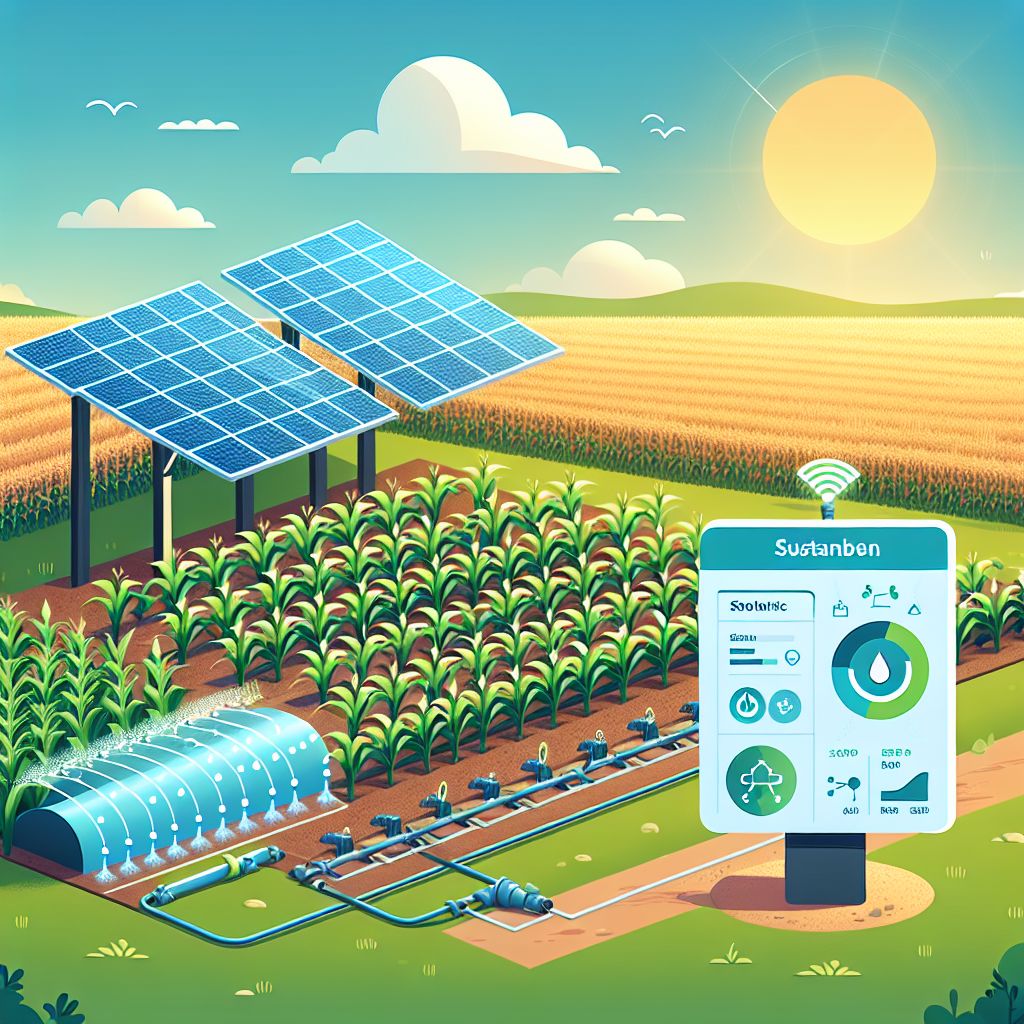
Key Takeaways
Solar irrigation systems are cost-effective, sustainable solutions for watering corn crops.
Choosing the right type of irrigation system, such as drip or sprinkler, depends on your specific farm conditions.
Water conservation strategies include soil moisture monitoring and scheduling irrigation to match crop needs.
Installing solar panels for irrigation systems requires consideration of soil type, crop requirements, and sun exposure.
Climate-responsive irrigation models and predictive analytics are shaping the future of smart farming.
Maximizing Crop Yields: Modern Irrigation in Corn Farming
Modern irrigation systems have revolutionized corn farming, allowing farmers to maximize crop yields while conserving water resources. By optimizing these systems through strategies such as soil moisture monitoring, variable rate irrigation, and precision agriculture, farmers can ensure that their corn plants receive the optimal amount of water, leading to higher crop yields and more sustainable farming practices.
Defining Efficient Irrigation
Efficient irrigation is all about delivering the right amount of water, at the right time, with minimal waste. It’s not just about saving water; it’s about maximizing the growth potential of every kernel of corn. And the secret sauce? It’s using solar power to run your irrigation systems. With the sun as your ally, you can hydrate your cornfields without relying on non-renewable energy sources.
Why Irrigation Matters for Corn
Corn is a thirsty crop. It needs a steady supply of water throughout its growth cycle to yield those plump, golden ears we all love. But here’s the kicker: too much or too little water can spell disaster for your harvest. That’s why smart irrigation isn’t just nice to have; it’s a must. And when you power your irrigation with solar energy, you’re not just nurturing your corn—you’re nurturing the planet.
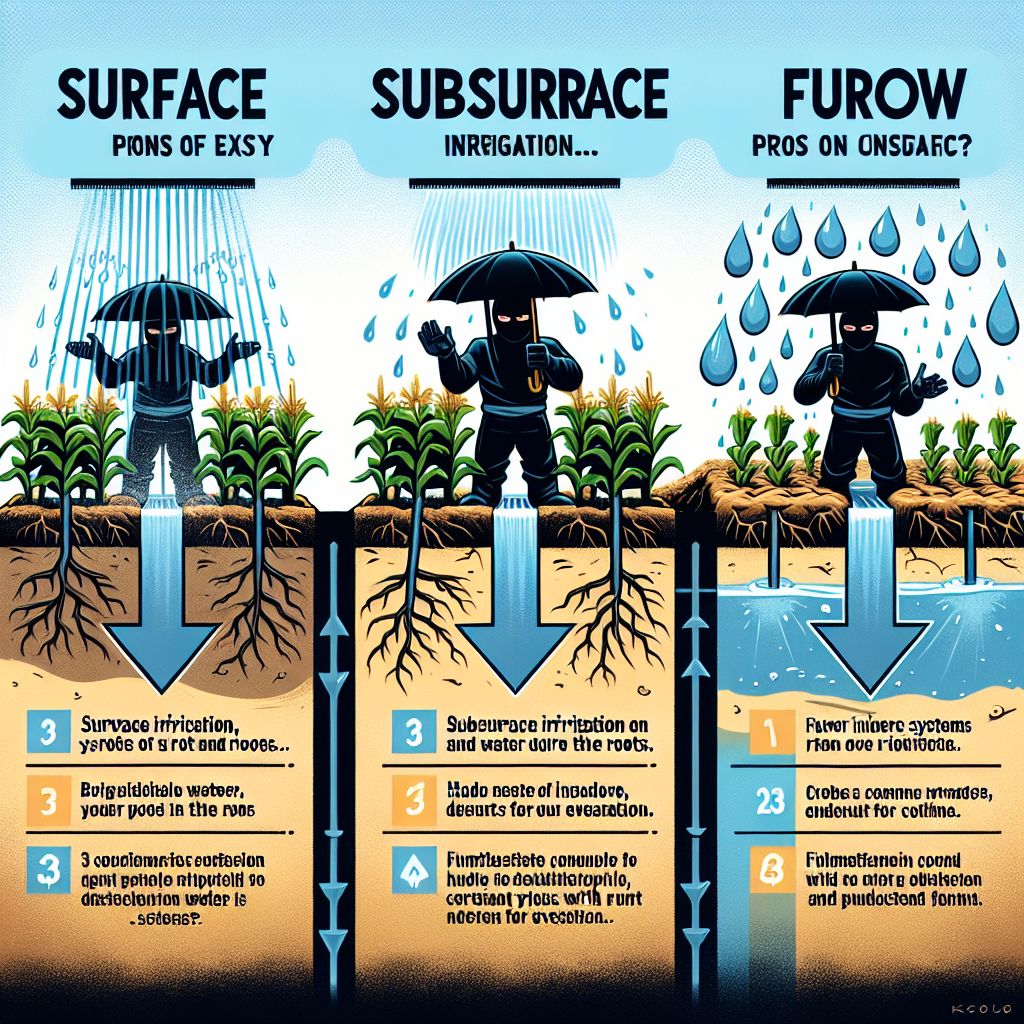
Exploring Irrigation Types
Surface vs. Subsurface vs Furrow: Pros and Cons
When it comes to irrigating your corn, you’ve got options. Surface irrigation is like giving your corn a shower; it’s simple and cost-effective. Subsurface is more like a stealthy ninja, delivering water directly to the roots. And furrow? It’s the old-school method that’s been around since the Pharaohs. But it’s not about what’s cool; it’s about what gets the job done for your unique farm.
Let’s break it down:
Surface Irrigation: Pros – Low cost, easy to manage; Cons – Can be inefficient, water loss due to evaporation.
Subsurface Irrigation: Pros – Reduces evaporation, precise water delivery; Cons – Higher initial costs, potential for clogging.
Furrow Irrigation: Pros – Good for certain soil types, traditional method; Cons – Labor-intensive, uneven water distribution.
Drip Irrigation: A Closer Look
Imagine giving each corn plant its own drinking straw—that’s drip irrigation. It’s the VIP treatment for your crops, delivering water and nutrients straight to the root zone. And when you add solar to the mix, it’s like having an eco-friendly butler for your fields. Efficiency is the name of the game, and drip irrigation, powered by the sun, plays to win.
Sprinkler Systems: When to Use Them
Sprinkler systems are like rain on demand for your corn. They’re great when you need to cover a lot of ground, literally. But they do have a taste for energy, which is why going solar makes so much sense. You get all the benefits of a downpour without the carbon footprint. It’s like having your cake and eating it too, but for farming.
But remember, every field is different. Here’s when to consider sprinklers:
If your land is relatively flat.
When you have a larger area to cover.
If your soil drains well.
“For every drop of water saved, there’s a kernel of corn that gets to live its best life. That’s the power of efficient irrigation.”
Furrow Irrigation: A Simple System
Furrow irrigation might seem old-fashioned, but sometimes, the old ways are gold. It involves creating trenches between crop rows and letting water flow down the furrows. It’s like creating little rivers that bring life to your corn. And when you’re eco-conscious, you can tweak this method to be more water-wise by considering efficient watering solutions for your irrigation needs.
Here’s the scoop on furrow irrigation:
It’s budget-friendly and easy to implement.
You can adapt it to reduce runoff by using gated pipes or surge valves.
Pairing it with solar pumps can bring your farm into the 21st century.
This below table compares these different irrigation systems for growing corn:
|
Irrigation System |
Description |
Advantages for Corn Production |
|
Subsurface Drip Irrigation (SDI) |
Plastic tubing is buried below the soil surface to deliver water directly to the root zone. |
– Reduces soil water evaporation, especially early in the season . 1, 2, 3 |
|
Center Pivot |
Overhead sprinkler system that rotates in a circular pattern. |
– Allows for more precise water application depth and timing compared to furrow irrigation. 1, 2 |
|
Furrow Irrigation |
Water is delivered through furrows or ditches between crop rows. |
– Commonly used for corn in some regions. 1 |
Alternative Methods: From Manual to Automation
Besides the mainstays, there’s a whole world of innovative irrigation methods out there. From hand-watering for that personal touch to fully automated systems that make farming feel like a sci-fi movie. The goal is to find the sweet spot between tradition and technology, where your farm’s needs meet Mother Nature’s rhythm.
Here’s what’s on the table:
Manual watering for small plots or gardens.
Automated timers and sensors for a hands-off approach.
Smart systems that adjust based on weather forecasts and soil moisture levels.
And the best part? Solar power can drive all of these methods, making them greener than a field of corn in July. So, let’s harness the sun, save some water, and grow some top-notch corn.
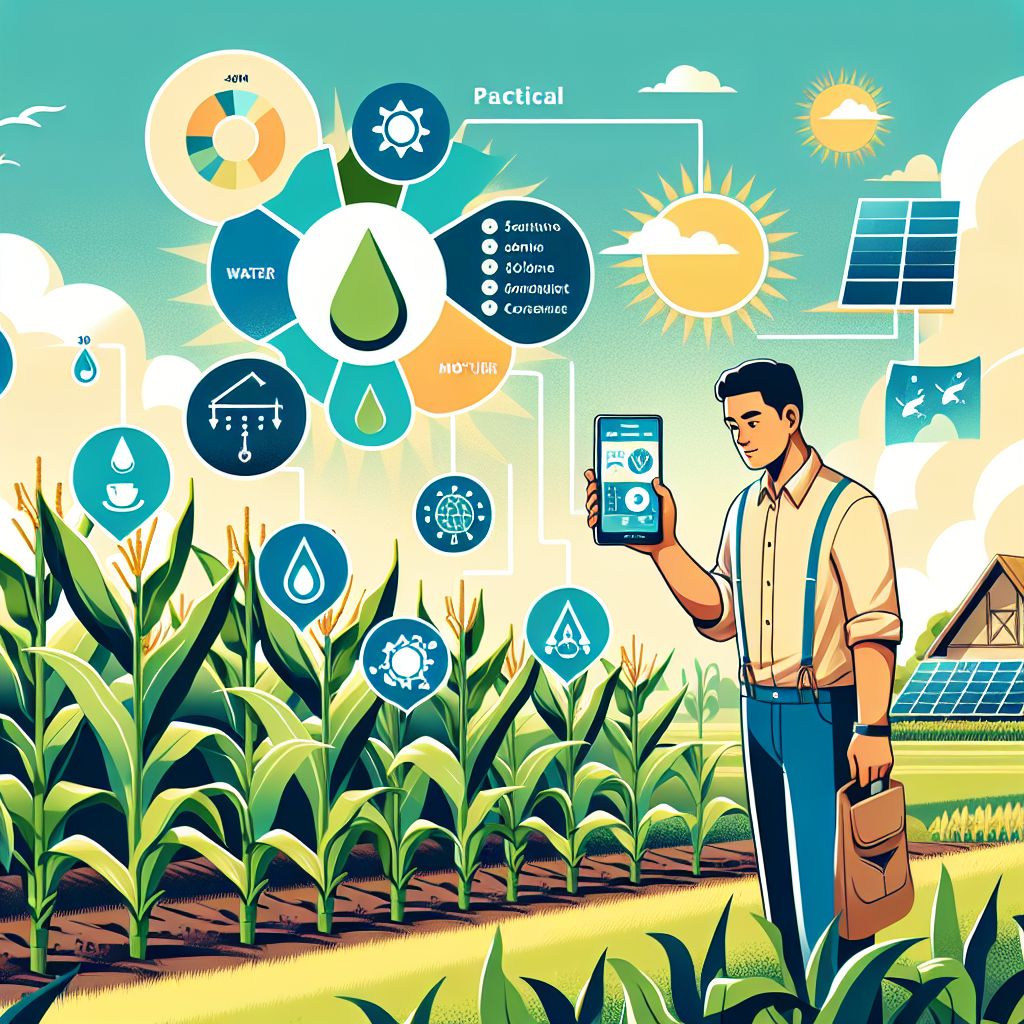
Strategies for Water Conservation
Water is a precious resource, and it’s becoming increasingly important to conserve it. One of the best ways to conserve water is to use it efficiently in agriculture. Overwatering crops can lead to wasted water, runoff, and nutrient leaching. Underwatering crops can lead to reduced yields and poor plant health.
The Role of Soil Moisture Monitoring
Keeps track of the water content in the soil to prevent over or under-watering.
Helps in making informed decisions on when to irrigate, saving water and energy.
Soil moisture sensors can be integrated with solar-powered systems for a sustainable setup.
Keeping an eye on soil moisture isn’t just smart; it’s essential. Think of it as a health check for your soil. Too dry, and your corn starts to stress; too wet, and you might as well be flushing nutrients away. That’s where soil moisture monitoring comes in. It’s like having a thirst meter for your crops, telling you exactly when they need a drink.
With solar-powered sensors planted alongside your corn, you can get real-time data straight to your smartphone or computer. This isn’t just convenient; it’s a game-changer. By understanding the moisture levels in your field, you can water with precision, ensuring every drop counts.
And here’s the kicker: when you use less water, you need less power to pump it. That means your solar panels don’t have to work as hard, which extends their life and saves you money. It’s a win-win for you and the environment.
Scheduling for Optimal Water Use
Timing is everything, especially when it comes to irrigation. Scheduling your water use isn’t about sticking to a strict timetable; it’s about syncing up with nature. You need to know the best times to water, how much to use, and how to adjust for weather changes. This isn’t guesswork; it’s precision farming.
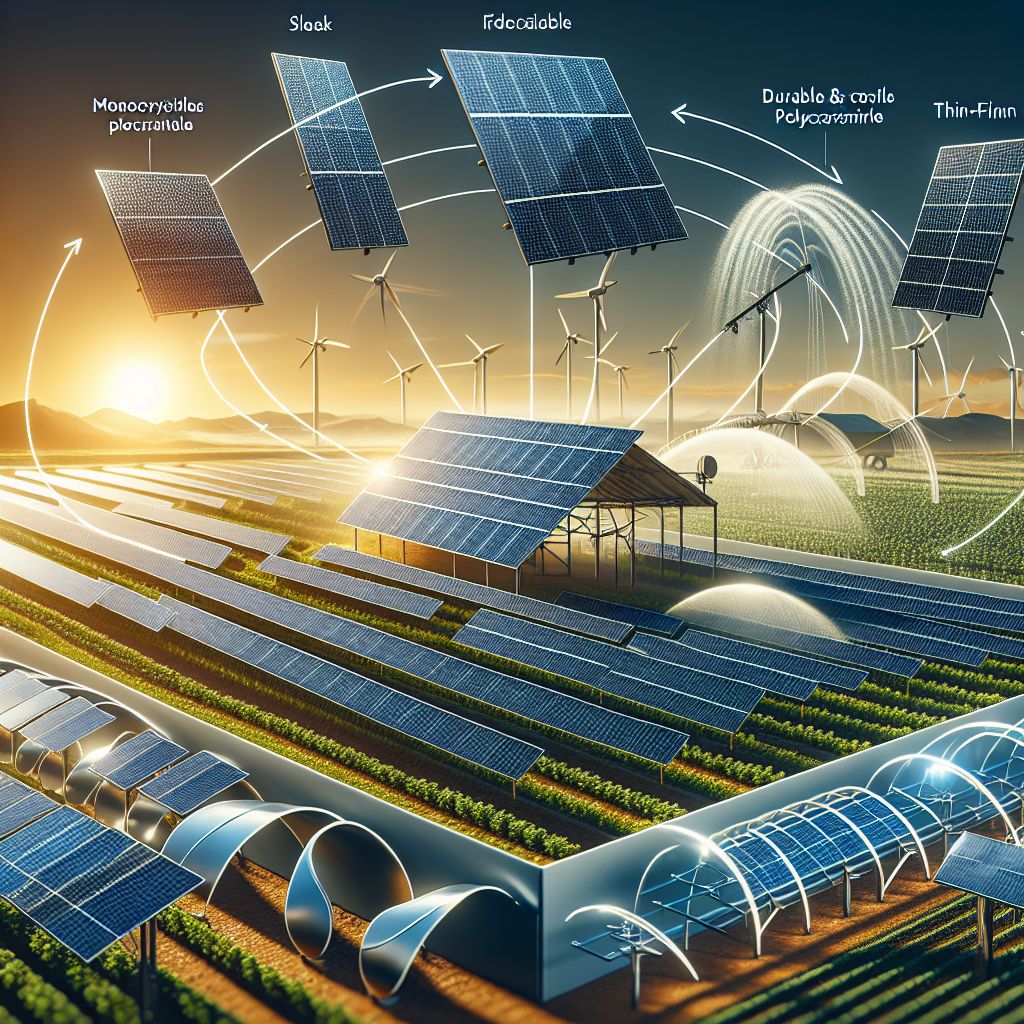
Make your Irrigation System Even More Efficient with Solar Panels
Now, let’s talk about supercharging your irrigation with solar panels. These aren’t just any panels; they’re your ticket to sustainable farming. By harnessing the power of the sun, you can run your pumps and sensors without relying on the grid. That means lower bills, less pollution, and more bragging rights at the farmers’ market.
This table shows how adding solar panels to an irrigation system can make it more efficient:
|
Efficiency Metric |
Irrigation System without Solar |
Irrigation System with Solar |
|---|---|---|
|
Energy Source |
Relies on grid electricity or diesel generators, which have ongoing fuel and maintenance costs. 1, 3 |
Uses free, renewable solar energy with no fuel or maintenance costs once installed. 1, 3, 4 |
|
Energy Consumption |
Consumes grid electricity or diesel fuel to power the irrigation pumps 1, 3 |
Consumes no grid electricity or diesel fuel, reducing overall energy usage. 1, 3, 4 |
|
Greenhouse Gas Emissions |
Produces greenhouse gas emissions from grid electricity or diesel generators. 1, 3, 4, 5 |
Produces zero direct greenhouse gas emissions during operation. 1, 3, 4, 5 |
|
Water Pumping Capacity |
Limited by the power available from the grid or diesel generator. 1, 3 |
Can be increased by adding more solar panels to provide more power for pumping. 1, 3 |
|
Reliability |
Dependent on the grid or diesel generator, which can be subject to outages or fuel shortages. 1, 3 |
Solar-powered systems are more reliable as they are not dependent on the grid or fuel deliveries. 1, 3 |
|
Operational Costs |
Ongoing costs for grid electricity or diesel fuel and maintenance. 1, 3 |
No fuel costs and lower maintenance costs compared to diesel generators. 1, 3 |
|
Return on Investment |
Payback period is longer due to ongoing fuel and maintenance costs. 1, 3, 4 |
Payback period is shorter due to lack of fuel costs, though higher upfront costs. 1, 3, 4 |
|
Environmental Impact |
Uses grid electricity or diesel, which have negative environmental impacts. 1, 3, 4, 5 |
Uses renewable solar energy with minimal environmental impact. 1, 3, 4, 5 |
Look at the Different Types of Solar Panels for your Irrigation System
Not all solar panels are created equal. You’ve got monocrystalline, polycrystalline, and thin-film panels, each with their own strengths. Monocrystalline panels are like the thoroughbreds of solar power – efficient and sleek. Polycrystalline panels are the workhorses – durable and cost-effective. And thin-film? They’re the flexible friend that can curve to fit just about any surface.
Picking the Correct Solar Panel to Work with the Irrigation System
Choosing the right solar panel is like picking the perfect hat for a sunny day. You need one that fits just right and does the job without overkill. Consider your farm’s size, the amount of sun you get, and your budget. And don’t forget to think about the future – solar tech is always improving, so leave room to grow.
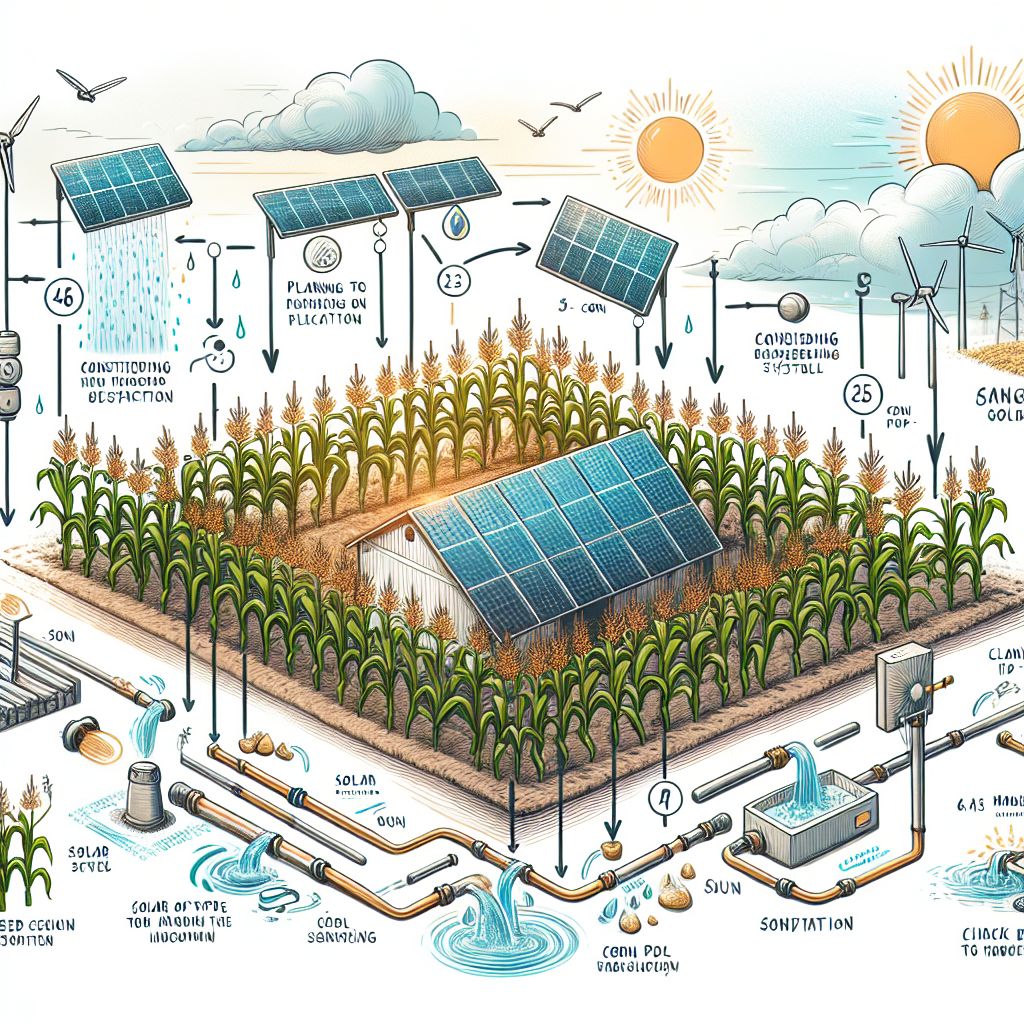
Setting Up Your Corn’s Solar Irrigation System
Setting up a solar irrigation system is like piecing together a puzzle. You need the right parts in the right places to get the picture-perfect outcome. Start with a solid plan. Map out where your panels will catch the most rays, where your sensors will sit, and how your pipes will run. Then, get to work putting it all together.
But it’s not just about the physical setup. You need to think about the flow of water, the needs of your corn, and the rhythm of the seasons. This is where your farming know-how really shines. Combine that with the power of the sun, and you’ve got a system that’s both eco-friendly and effective.
Preliminary Considerations: Soil, Crop Needs and the Sun
Before you dive in, let’s take a step back. You need to consider your soil type – is it sandy, loamy, or clay? Each one holds water differently. Then, think about your corn’s needs. Different varieties have different thirst levels. And finally, look to the sky. How much sun does your farm get? You need enough to power your panels but not so much that you bake your crops.
Here’s a quick checklist to get you started:
Check your soil type and water retention capabilities.
Know your corn’s water needs throughout its growth cycle.
Calculate the solar exposure of your fields to size your solar panel system appropriately.
Once you’ve got these details nailed down, you’re ready to move forward. With a little planning and a lot of sunshine, your solar irrigation system will be the talk of the town.
Remember, the goal is to create a system that’s as self-sufficient as possible. That means minimal input from you and maximum output for your corn. By aligning your irrigation with the natural cycles of your farm, you’ll be setting yourself up for success.
“When you align your farm with the cycles of nature and the power of the sun, you’re not just growing corn; you’re growing a better future.”
Installation Tips for Long-Term Success
Installation is where the rubber meets the road. You want to get it right the first time to avoid headaches down the line. Make sure your solar panels are positioned to catch peak sunlight. Angle them just right, secure them tightly, and connect them to your irrigation system with care. A good setup today means a great harvest tomorrow.
Maintenance Matters: Keeping the System at Its Best
Like any good farming equipment, your solar irrigation system needs some TLC to keep running smoothly. Clean those panels to keep them soaking up the sun, check your sensors to ensure they’re giving accurate readings, and keep an eye on your pipes for any signs of wear and tear. A little maintenance goes a long way in keeping your system efficient and your corn happy.

Smart Farming: Adapting to Climate Challenges
Farming isn’t just about growing crops; it’s about growing with the times. Climate change is throwing us curveballs, and we need to be ready to catch them. That’s where smart farming comes in. By using data, tech, and a touch of ingenuity, we can adapt to whatever Mother Nature has in store. And solar irrigation is a big piece of that puzzle.
With sensors to monitor soil and weather, and panels to power your pumps, you’re not just farming smarter; you’re farming for the future. It’s about being proactive, not reactive, and using every tool at your disposal to keep your corn thriving, come rain or shine.
Climate-Responsive Irrigation Models
Imagine irrigation that adjusts itself like a thermostat, responding to the climate in real-time. That’s the future we’re heading towards. With climate-responsive models, your irrigation system can factor in temperature, humidity, and even the forecast to water your corn just right. It’s not science fiction; it’s science fact, and it’s coming to a farm near you.
Future Trends: Predictive Analytics and Irrigation
In the not-so-distant future, the integration of predictive analytics with irrigation systems will redefine precision agriculture. Imagine an irrigation system that not only responds to current soil and weather conditions but also predicts future needs based on historical data, weather patterns, and crop growth models. This is where we’re heading, and the implications for water conservation, crop yield, and resource management are profound.
These systems will use algorithms to analyze vast amounts of data, providing recommendations for the most efficient irrigation schedules. Farmers will be able to anticipate water needs, prepare for adverse weather conditions, and optimize resource use to ensure that every drop of water is used to its fullest potential. As a result, farms will become more resilient to the challenges posed by climate change, ensuring food security and the sustainability of our agricultural practices.
Conclusion:
Solar irrigation systems represent a leap forward in sustainable agriculture. They offer a way to combine the timeless practice of growing corn with the cutting-edge technology of solar power. As we’ve seen, these systems can range from the simple and traditional to the highly advanced and automated, but they all share a common goal: to water crops efficiently and sustainably. By embracing solar irrigation, farmers can reduce their carbon footprint, save on energy costs, and contribute to a healthier planet—all while growing a bountiful corn crop.
Frequently Asked Questions (FAQ)
What Makes a Solar Irrigation System ‘Efficient’?
The efficiency of a solar irrigation system begins with the solar panels. High-quality solar panels with a high conversion efficiency are crucial for capturing maximum sunlight and converting it into electricity. The more efficient the solar panels, the more energy they can generate, which in turn powers the irrigation system. The second part of an Efficient Solar Irrigation System is a well-designed irrigation system that optimizes water distribution. This includes selecting the appropriate irrigation method (e.g., drip irrigation, sprinkler irrigation, or surface irrigation) based on the crop type, soil conditions, and water availability. Properly designed irrigation systems minimize water wastage and ensure that water is delivered to the plants in the most efficient manner.
Can Drip Irrigation Work for Large-Scale Corn Farms?
Absolutely! Drip irrigation is scalable and can be highly effective for large-scale corn farms. It allows for precise water delivery to the roots of each plant, which can lead to significant water savings and improved crop yields. While the initial setup costs may be higher compared to traditional methods, the long-term benefits in water efficiency and increased productivity can make it a wise investment.
How Do I Choose the Right Irrigation System for My Cornfield?
Choosing the right irrigation system for your cornfield involves assessing several factors, including the size and topography of your land, soil type, climate, water availability, and the specific needs of your corn variety. It’s also important to consider the sustainability of the system, such as the potential integration of solar power. Consulting with agricultural experts or extension services can provide valuable guidance in making the best choice for your farm.
What Are the Cost Implications of Different Irrigation Systems?
The cost of irrigation systems can vary widely depending on the type and scale of the system. Surface and furrow irrigation systems tend to have lower initial costs but may be less efficient. Drip and sprinkler systems are more expensive upfront but can offer better water efficiency and long-term savings. Adding solar power to any system will involve additional costs for solar panels and equipment, but these can be offset by energy savings and potential subsidies or tax incentives.
How Often Should I Schedule Irrigation for My Corn Crops?
Irrigation scheduling for corn crops should be based on the plant’s growth stage, weather conditions, soil moisture levels, and the evapotranspiration rate. It’s crucial to avoid both under-watering and over-watering. The use of soil moisture sensors and weather forecasting tools can help determine the optimal irrigation schedule. As a general rule, corn requires more water during its vegetative growth stages and less as it nears maturity.
As the agricultural sector increasingly adopts renewable energy solutions, solar irrigation systems are becoming a popular choice for farmers growing crops such as corn. These systems not only reduce the reliance on traditional energy sources but also provide a more sustainable and cost-effective way to ensure crops receive the right amount of water, exactly when they need it. With advancements in technology, solar irrigation systems can now be tailored to the specific needs of a farm, enhancing crop yield and promoting better water management practices.







Leave a Reply